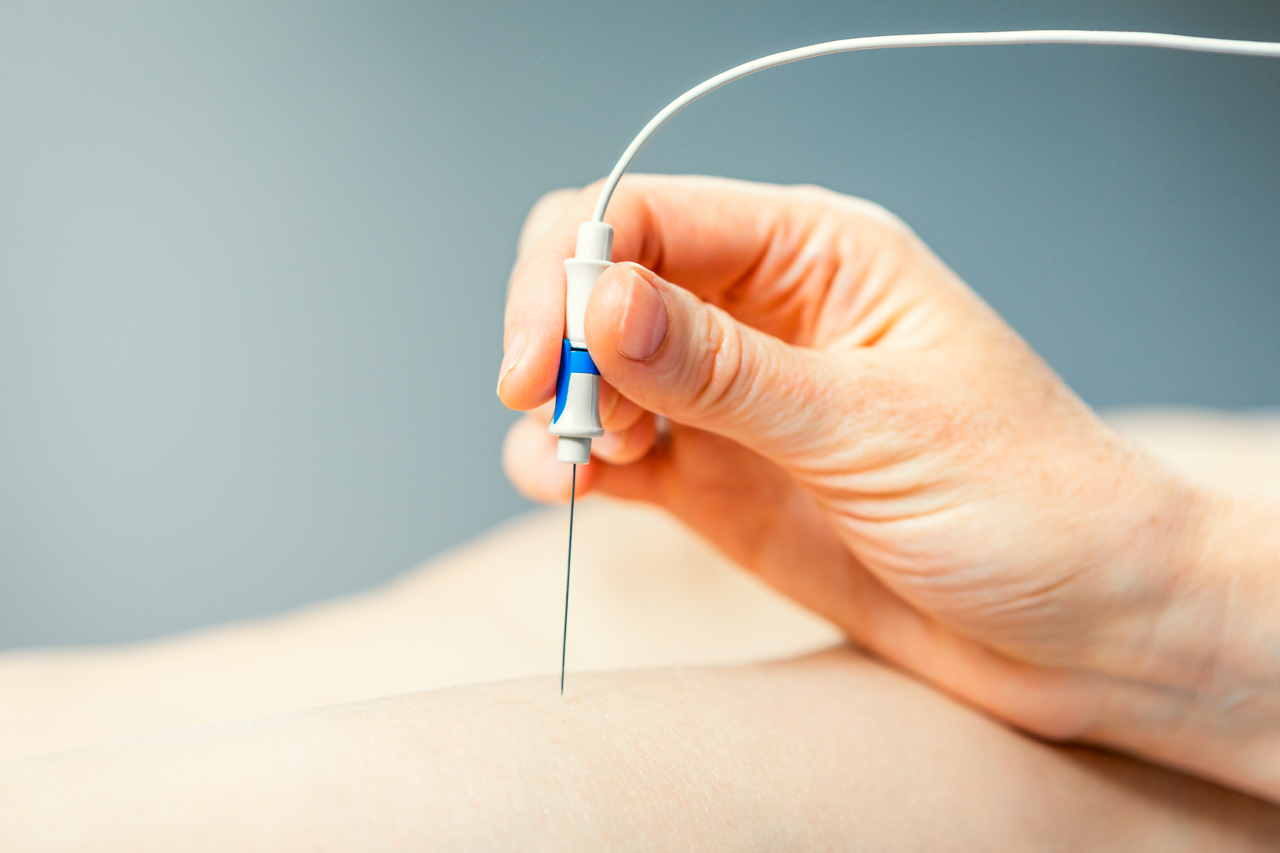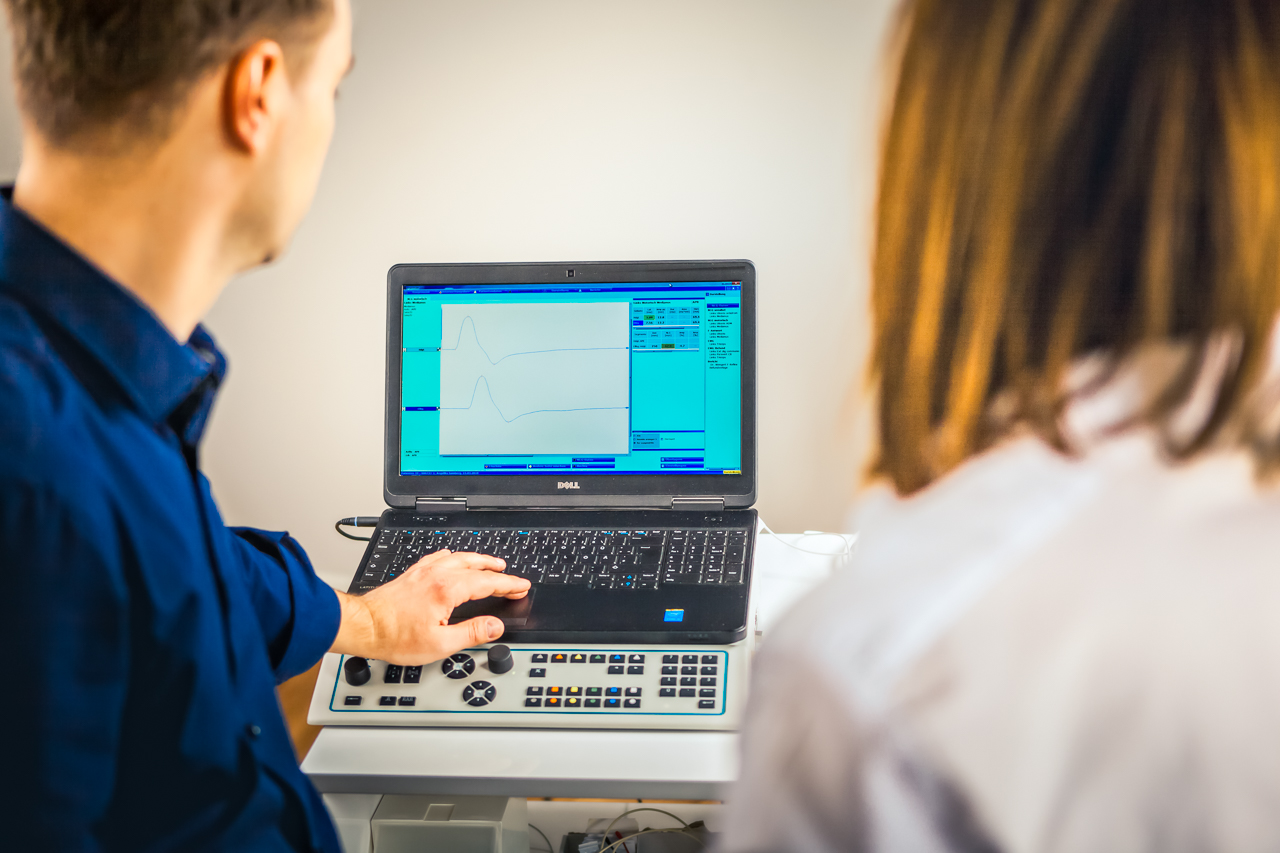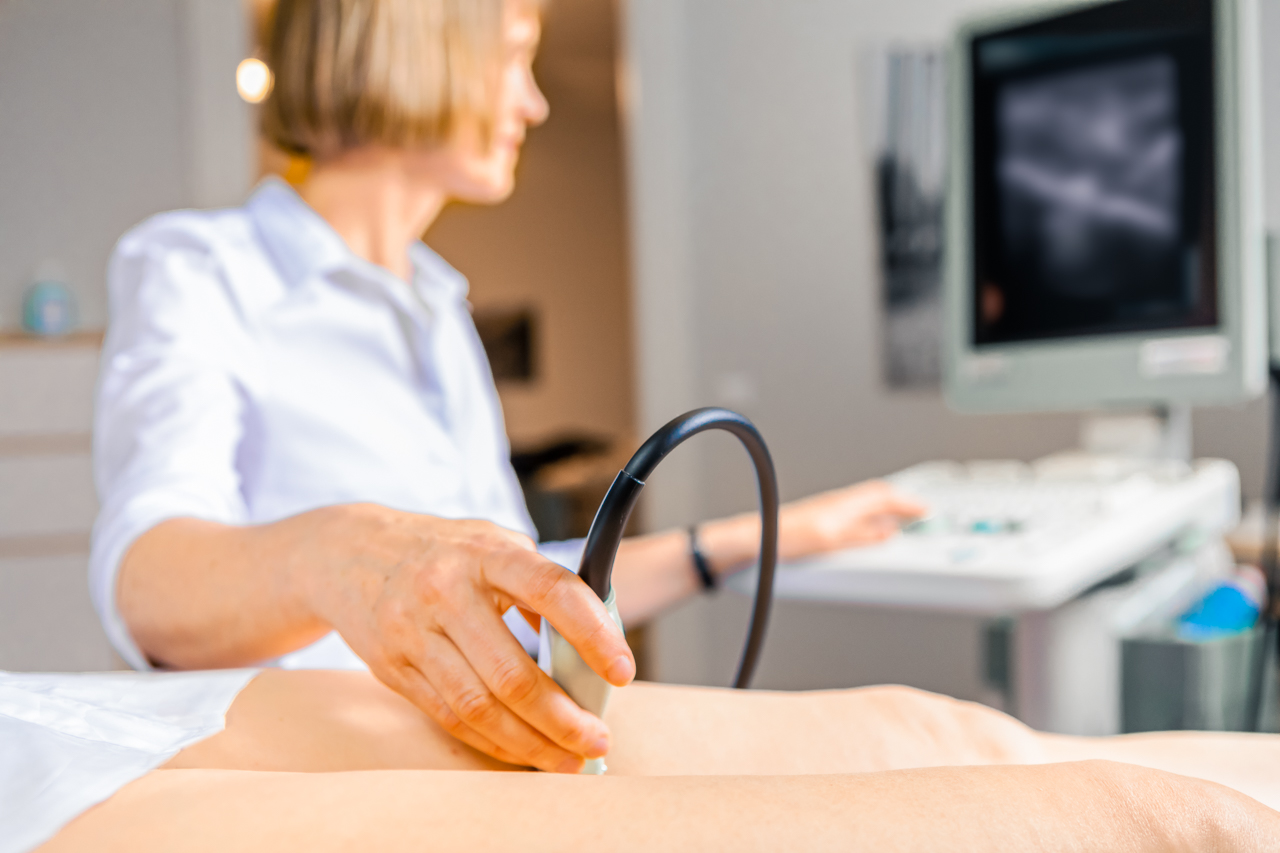1. What does EMG stand for?

2. What happens during an EMG examination?

3. What is the objective of an EMG examination? Which information can be obtained by an EMG examination?

- How severe is the degree of a nerve lesion? Is the nerve damage acute, subacute or chronic?
If signs of acute and higher degree nerve damage are seen on EMG examination, this will, of course, have important implications for the therapeutic approach. - Muscle weakness: myopathy or neuropathy?
Muscle weakness can be caused either by a problem with the nerves that control the muscles or the muscles itself. EMG results can reveal nerve dysfunction, muscle dysfunction or problems with nerve-to-muscle signal transmission. Again, the therapeutic approach is totally different, depending on EMG findings. - Are their signs of nerve regeneration?
After a known nerve damage, EMG can show the regeneration process. If regeneration proceeds, then only patience may be needed. If regeneration processes are not seen on EMG, oftentimes there is a cause for this, that has to be searched for. This cause should be therapeutically targeted next, in order to restore the nerves capability to regenerate.
4. Why EMG?


- Disc herniation
The single most important question that can be answered using electrodiagnostic studies is, whether nerve fibers are merely irritated or whether nerve fibers are damaged. Using EMG, the degree of the nerve lesion and the acuity of the nerve damage can be studied. If nerve fibers are damaged, then there is a substantial risk of persisting neurological deficits. Furthermore, EMG is a very sensitive method and can detect changes in muscle fibers long before these changes are resulting in a reduction of muscle force. Thus, results of EMG testing is the most important criterion to decide, whether an operation is necessary or not. - Polyneuropathy
If EMG shows an acute damage of motor nerve fibers due to polyneuropathy, this is a warning sign. In this situation, further diagnostic procedures should be intensified, so that treatment can be started timely. - Myopathy
EMG is probably the single most important examination to reach a diagnosis of myopathy. - Nerve injury
In the case of nerve injury, the degree of nerve lesions can be graduated based on electrodiagnostic testing (neurapraxia, axonotmesis, neurotmesis). Chances of spontaneous regeneration differ substantially between these different degrees of nerve lesions. This has implications for the planning of therapy. Using EMG it can also be demonstrated, whether regeneration processes have already started and how they proceed over time.
5. Is an EMG examination painful?
EMG involves using a very small needle. This needle is placed gently into specific muscle groups, depending on the problem that has to be investigated. The needle tests are a bit uncomfortable but usually quite tolerable as the needles used are very thin (similar to acupuncture needles). If there is anything that you feel is too uncomfortable let me know. Tests can often be done in a different way or can be stopped if you find them too uncomfortable.
Please note: This is a different technique compared to so-called “Surface EMG”, where no needles are used. Indications for use and information gained by surface EMG vs needle EMG are quite different. On this webpage, I am talking primarily about needle EMG.
6. Is an EMG examination dangerous?
7. Are there contraindications for EMG?
8. What kind of medical training do doctors who perform NCS and EMGs have?
9. What is sonography of nerves and muscles (neuromuscular ultrasound)?

More informations www.nervenultraschall.de (german language)
Do not hesitate to contact us.
Phone 030 797 88 90-0


